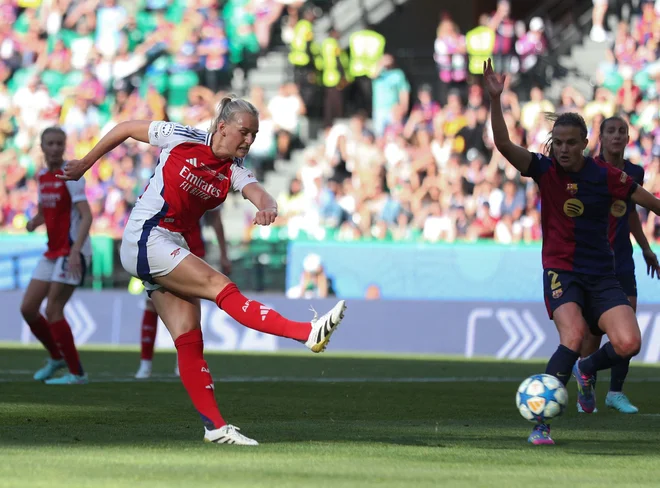Lili Rademakers put her mark on her own films and on that of husband Fons
/s3/static.nrc.nl/images/gn4/data132744508-c171b1.jpg)
Two feature films made Lili Rademakers, but her oeuvre extends beyond that. Before she finally started directing herself, she had worked so intimately with her husband Fons Rademakers, which on all his eleven feature films, including Oscar winner The attackher stamp is also printed – no matter how modest they did about it. This makes her a rare female guests in Dutch cinema. On Saturday, at the age of 95, she died in a hospital in Rome, from the consequences of ischemia. Rademakers had been living in Italy for years.
She was born in 1930 as the daughter of general practitioner Ad Veenman and his wife Sylvia Brandts Buys. After the divorce of her parents, Lili stayed with her mother, who found a new man in her life, journalist GBJ (Guus) Hiltermann. While Brandts Buys and Hiltermann became a journalist and led the Haagse Post In the 50s and 60s, she sent her daughter to film schools in Paris and Rome; The Dutch Film Academy did not yet exist.
With her thesis under her arm – an analysis of his film La Strada – the Dutch film student stepped off director Federico Fellini. He accepted her as a script girl for his new production, La Dolce Vita (1960). When one after the other had left Direction Assistant, Lili Veenman stood as Fellini’s first assistant at the Trevi fountain when he played one of the best-known scenes in film history: Anita Ekberg seducing in the water of the Fontein Marcello Mastroianni. (In an interview with it Algemeen Handelsblad From those days, Lili called the sex diva « just a pienter girl of twelve years. »)
Pepper
In Rome she also met another Dutchman with film ambitions: stage actor and director Fons Rademakers who did an internship with filmmaker Vittorio de Sica to master a new medium. Lili Veenman invited him to come and eat, peppers filled with kidneys. Later he would tell his sons that he was in love when she had opened the door. But she let him wait five years. Because she first wanted to finish her education and start her own career in the film. And because Fons had a serious relationship at that time. « If we started something, it had to be forever, » said Lili.
She first became Rademakers’ assistant – although his diploma had obtained, he did not – and then also his wife. Lili cooperated on all the films that Fons directed. There are beautiful photos, made by their girlfriend Jutka Rona, where she lies on the couch as a corpse, and he sits on the floor and holds his hand like a camera lens. For example, they played the scenes for his films in their living room. She then turned it into a storyboard, sketchy drawings in which the precise camera edges are recorded. Before she became a film student, Lili Veenman had worked as a draftsman at the studios of Marten Toonder. The Storyboards are stored in the EYE Film Museum.
Lili was cautious in the collaboration. Occasionally she suggested Fons, the theater maker with a preference for literature, a pure film idea. That’s how she came up with the Sinterklaas film Makkers stops your wild roar (1960) The image of a city where new Sinterklazen appear, under a gallery, on the tram, in a taxi, as a huge mitigated shade against the canal facades.
Her mother suggested that they would bundle their two talents – her imagination, his sense of dialogue and reality – as ‘regied duo’. But that never happened. It remained Fons’ films, not hers. In an interview with NRC Handelsblad In 2003 Lili said: « He never made a cheap rot movie. » Later she would say aloud what she implied there: I had done it differently.
Eternal life
All the while she continued to cherish the ambition to do it herself. But the treadmill of new film projects from her husband – writing scenario, gathering financing, preparing, recordings – hindered the development of her own plans. It was a writer, artist and above all one of her best friends Hugo Claus who gave the last push: « You certainly think you have eternal life, » he said on her fiftieth birthday. « If you want to make a movie, you have to do it now. »
Claus and Lili worked together the book Minuet From Louis Paul Boon to a scenario. In 1982 the feature film was released, with predominantly enthusiastic reactions from Dutch critics (‘from international allure’, ‘real filmmaker’) and predominantly economical (‘not without merit’) in Boon’s own Belgium. What was clear in any case: Lili Rademakers filmed very differently than Fons Rademakers. Fons didn’t understand, Lili said: « A paper of a motif and told three times. » In an interview with Free Netherlands Lili called her way of filming « a relief of the almost imperceptible. »
Central to the story is a triangular relationship between a worker, his wife and the maid. At the end of her life, the daring motif of sex with a minor girl turned out to have a interface with Lili’s own history. To Jutta Chorus, one of the authors of this necrology, she told in 2022 for the first time that the beloved of her mother, the respected journalist Hiltermann, started a relationship with Lili when she was fifteen years old. « I had kept that too early, poisoned sexual experience with Hiltermann in myself, » said Lili. « This was the time to do something with it. »
She had never told her husband or their two sons all those years. That she did now, as part of the book Alma’s daughtersabout her ‘for mother’s’, she thought no more than honest with them. After all, their whole personal life was also in Alma’s daughters. « It’s cowardly opposite them if I don’t tell what happened in my youth. »
Five years later, Lili Directed Rademakers Diary of an old foolAnother Ménage à Trois with a young woman and an older man. This time the reception was more economical. It was her last movie.
After Fons’ last direction, The Rose Garden (1989), Fons and Lili Rademakers left the Netherlands and lived alternately in France and Italy. Every morning when they woke up, Fons said, « Day Veentje, I love you. » After his death, in 2007, Lili moved to Colle-Vecchio for good, in her house just outside the medieval village about sixty kilometers north of Rome. There she received her friends, of whom a small circle came to lunch with her every Friday. Until the end she discussed eagerly and cordially, and often in a very decided tone about food, politics and film.
She did not think that she had directed no more than two films. « I am not ambitious. I aimed for a pleasant marriage and a nice oeuvre. »

/s3/static.nrc.nl/images/gn4/stripped/data132749515-2f8205.jpg|https://images.nrc.nl/-mo6zT0cfxfYlWJvxIGClE2gYqQ=/1920x/filters:no_upscale()/s3/static.nrc.nl/images/gn4/stripped/data132749515-2f8205.jpg|https://images.nrc.nl/VodNcggSxkiH_CjkbTN5CPPFiJw=/5760x/filters:no_upscale()/s3/static.nrc.nl/images/gn4/stripped/data132749515-2f8205.jpg)
:format(webp)/s3/static.nrc.nl/wp-content/uploads/2025/05/16164614/data132173338-c7a778.jpg)
:format(webp)/s3/static.nrc.nl/images/gn4/stripped/data132705098-192ab9.jpg)



